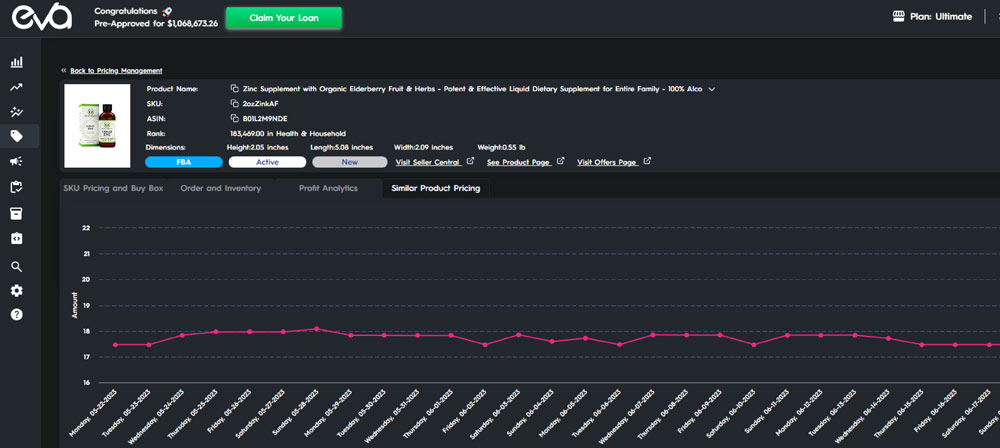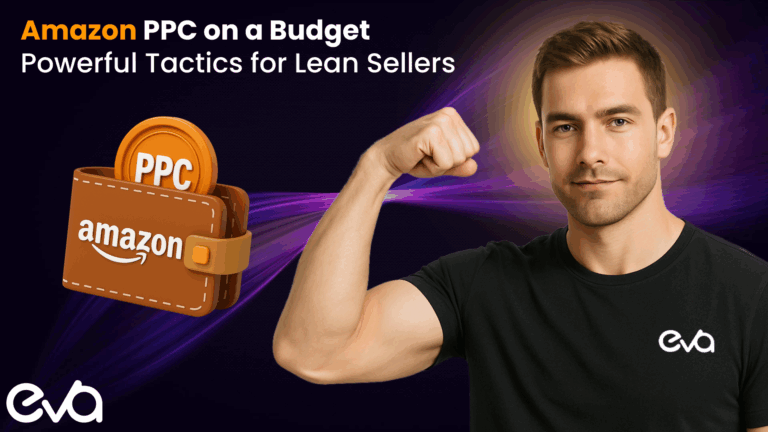Are you tired of playing catch-up with your competitors on Amazon? Wondering how to gain an edge and outsmart your rivals in the ever-competitive online marketplace?
If you’re ready to take your Amazon selling game to the next level, brace yourself for advanced competitive analysis hacks that will leave your rivals in the dust.
In this blog post, you will discover the 5 game-changing hacks to outsmart your Amazon rivals! Stay ahead of the competition and dominate the marketplace today.
Say goodbye to generic solutions and rookie mistakes – it’s time to equip yourself with the tools and knowledge to dominate the Amazon landscape and skyrocket your sales.
Let’s dive in!
Table of Contents
Hack 1: Reverse Engineering Competitor Strategies
To outsmart your rivals on Amazon, it’s crucial to delve into their strategies and reverse engineer their success. By doing so, you can unlock valuable insights and leverage them to propel your own business forward.
This section’ll explore advanced techniques that go beyond surface-level analysis, empowering you to understand and surpass your competitors.
Here’s how you can master the art of reverse engineering their strategies:
Identifying Top-Performing Products & Sellers In Your Niche

To gain a competitive advantage, start by identifying the top-performing products and sellers within your niche. Look for products that consistently rank high in search results and generate significant sales.
Pay close attention to sellers who have established themselves as leaders in your market. Analyze their product listings, their customer engagement, and the quality of their branding and packaging.
For example, if you’re selling fitness equipment, you may discover that resistance bands are a top-performing product in your niche. By identifying these trends, you can focus on offering a superior product or finding a unique angle to differentiate yourself.
Analyzing Competitor Product Listings, Pricing Strategies & Customer Reviews
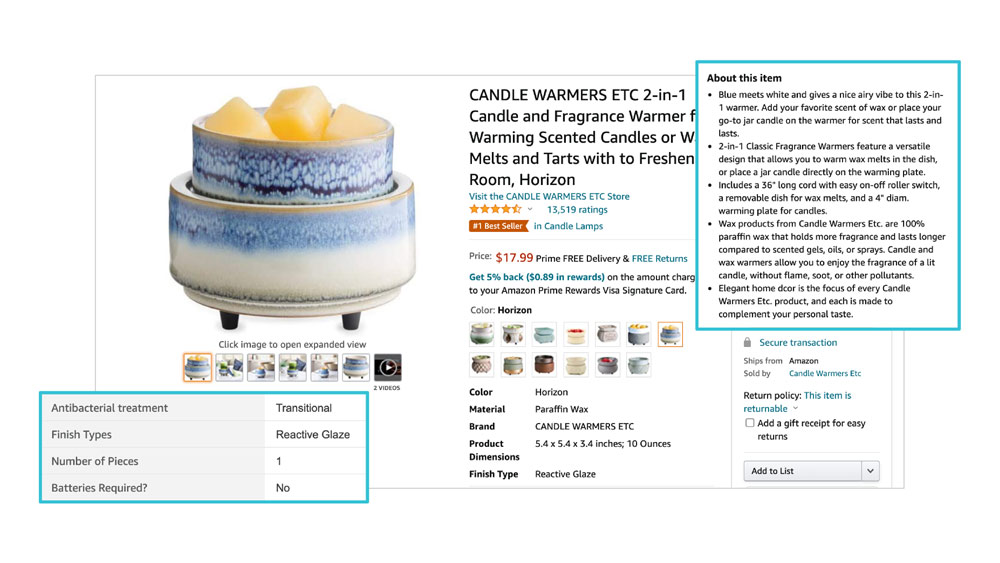
Take a deep dive into your competitors’ product listings, pricing strategies, and customer reviews to uncover valuable insights.
Scrutinize their product titles, bullet points, and descriptions. Look for patterns in the way they present their products, highlighting unique features, benefits, or keywords.
For instance, if you notice that successful competitors emphasize the durability and versatility of their products, you can incorporate similar messaging into your own listings.
Additionally, analyze their pricing strategies to determine how they position themselves in the market. Are they offering premium pricing with added value? Or are they focusing on competitive pricing to attract a larger customer base?
Moreover, delve into customer reviews to understand what buyers appreciate and any pain points they encounter.
Pay attention to recurring themes and identify opportunities to address those pain points with your own products.
Leveraging Third-Party Tools For Data-Driven Insights
When it comes to reverse engineering competitor strategies, utilizing data-driven insights is crucial.
Leverage powerful tools like Eva to understand your competitors’ performance better. These tools provide valuable metrics such as sales estimates, keyword rankings, and historical data.
For example, by using Eva, you can monitor your competitors ASIN’s sales performance over time and identify any significant fluctuations. Analyzing this information lets you identify high-demand products, monitor market trends, and uncover potential gaps in your competitors’ strategies.
Armed with these insights, you can make informed decisions to refine your own product offerings, optimize pricing, and improve overall market positioning.
To take your reverse engineering efforts to the next level, consider conducting A/B testing with your product listings. Implement small changes to your titles, bullet points, or images and monitor the impact on conversion rates. This iterative approach allows you to fine-tune your strategy based on real-time data and gradually optimize your listings for maximum impact.
Hack 2: Uncover Untapped Keywords for Enhanced Visibility
Uncovering untapped keywords is a game-changer when it comes to maximizing your visibility on Amazon.
By targeting the right search terms, you can increase your chances of appearing in relevant search results and reaching your target audience.
This section will explore advanced techniques that go beyond the basics, helping you uncover those hidden gems to enhance your visibility on Amazon. Here’s how you can do it:
Using Amazon’s Auto-Suggest Feature To Identify Popular Search Terms
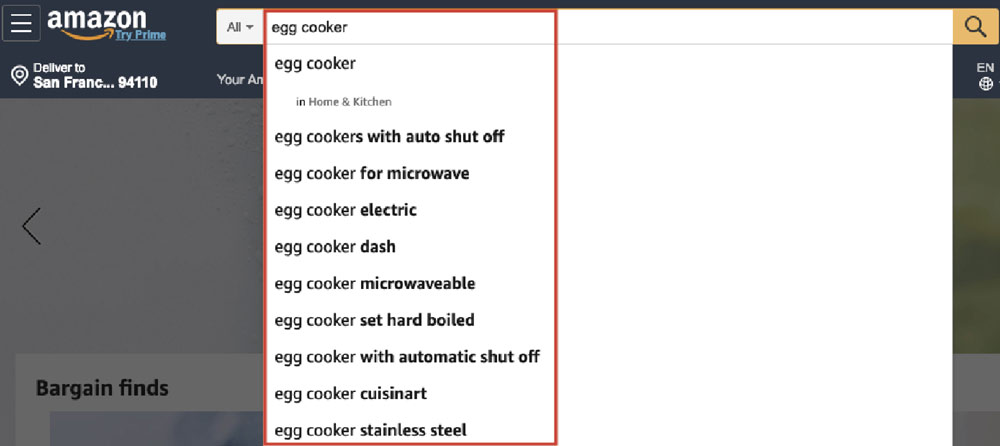
Amazon’s auto-suggest feature is a goldmine for keyword research. Amazon provides a dropdown list of suggested search terms as you start typing in the search bar.
These suggestions are based on real user search queries and can provide valuable insights into popular keywords related to your niche.
Pay attention to long-tail keywords in the auto-suggest results, as they often represent more specific and less competitive search terms.
For example, if you’re selling organic skincare products, you might discover that “organic skincare for sensitive skin” is a popular search term. Incorporating these keywords into your product listings can give you a competitive edge and attract highly targeted traffic.
Exploring Long-Tail Keywords & Utilizing Them In Your Product Listings
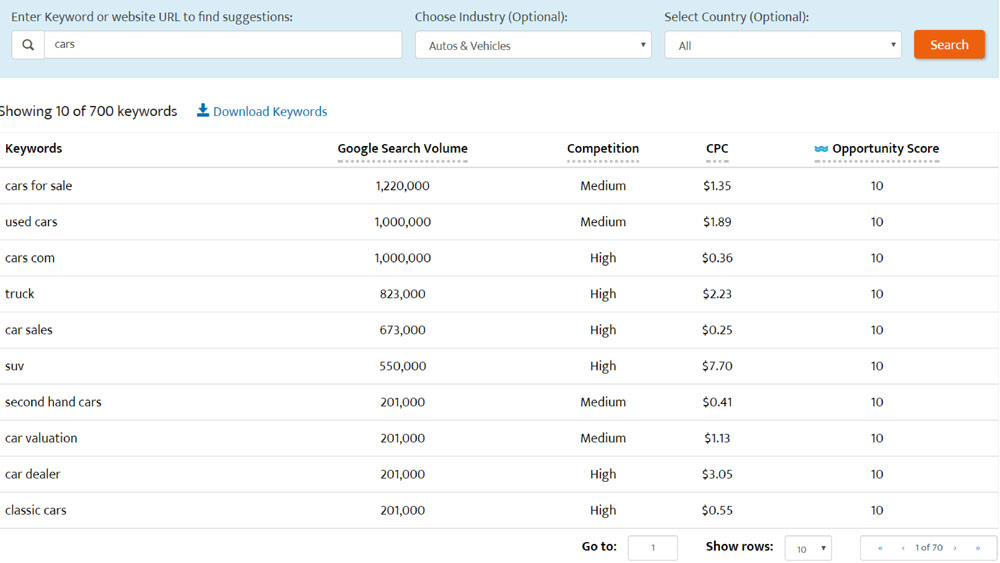
While generic keywords are highly competitive, long-tail keywords offer a great opportunity to capture specific customer intent and stand out from the crowd.
Long-tail keywords are more specific phrases that customers use when searching for products. They may have lower search volume but often lead to higher conversion rates. Conduct thorough research to identify relevant long-tail keywords specific to your products.
Tools like Google Keyword Planner or Amazon’s own suggested search terms can assist you in this process. Once you’ve identified these keywords, strategically incorporate them into your product titles, bullet points, descriptions, and backend keywords.
Doing so will increase the likelihood of your products appearing in targeted search results and attract motivated buyers.
Conduct Keyword Research Using Tools

To take your keyword research to the next level, leverage advanced tools like SEMrush or Keyword.io. These tools provide comprehensive insights into keyword data, search volume, competition, and related terms.
They can help you discover untapped keywords, uncover popular variations, and even analyze your competitors’ keyword strategies. Dive into these tools and explore relevant keywords specific to your niche.
Look for keywords with a reasonable search volume and low competition, as these present valuable opportunities to gain visibility. Incorporate these keywords in your product listings to boost your rankings and attract organic traffic.
Remember, uncovering untapped keywords requires continuous research and analysis. Stay updated with the latest trends in your industry, monitor changes in customer preferences, and adapt your keyword strategy accordingly.
Additionally, keep an eye on your competitors’ keyword usage to identify gaps or opportunities.
Hack 3: Analyzing Competitor Ad Campaigns

To stay ahead of the competition on Amazon, it’s crucial to analyze and dissect your competitors’ ad campaigns.
By understanding their strategies, placements, and budgets, you can make informed decisions to optimize your own advertising efforts.
This section’ll explore advanced techniques beyond surface-level observations, empowering you to gain valuable insights and outperform your rivals.
Here’s how you can analyze competitor ad campaigns effectively:
How To Identify Sponsored Products & Sponsored Brands Advertisements
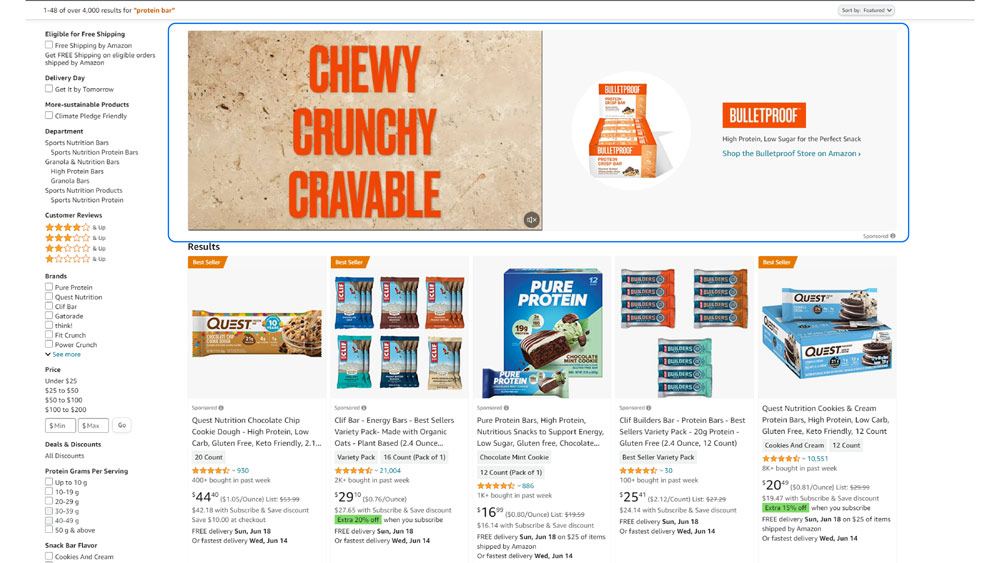
The first step in analyzing competitor ad campaigns is to identify their sponsored products and sponsored brands advertisements.
Sponsored products appear in search results as sponsored listings, while sponsored brands are showcased as banner ads at the top or bottom of the search results page. Start by searching for keywords related to your products and observe the search results.
Sponsored listings are labeled as “Sponsored” or “Ad,” while sponsored brand ads feature the brand’s logo and a headline. Take note of the competitors who consistently appear in these ad placements.
For example, if you sell kitchen appliances, you might notice that a competitor’s brand consistently appears at the top of the search results when users search for “stainless steel cookware.”
By identifying the players in your niche who invest in sponsored ads, you can gain insights into their advertising strategies and uncover potential opportunities for your own campaigns.
How To Evaluate Competitor Ad Placements, Keywords & Budgets
Once you’ve identified your competitors’ ad campaigns, it’s time to evaluate their placements, keywords, and budgets. Look for patterns in where their ads appear do they primarily target top-of-search placements, product detail pages, or category pages?
Understanding their preferred ad placements can give you insights into their targeted audience and marketing strategy.
For example, if you notice that a competitor consistently targets top-of-search placements, it indicates their focus on capturing customer attention at the beginning of the customer journey. Next, analyze the keywords they’re bidding on.
Look for keywords that consistently trigger their ads, indicating their focus areas and target audience.
Note the frequency with which their ads appear and track their visibility over time. If their ads consistently appear on highly competitive keywords and placements, it suggests a substantial advertising investment.
However, remember that visibility alone doesn’t always indicate a large budget. Competitors may employ strategies to maximize their ad exposure without necessarily spending significantly. Nonetheless, this insight can help you gauge the level of competition you’re up against and determine how much you need to allocate to your own ad campaigns.
Hack #4: Optimizing Product Listings for Higher Conversion Rates
When selling on Amazon, optimizing your product listings is key to boosting conversion rates and outshining your competitors.
By strategically analyzing, crafting, and enhancing your listings, you can capture the attention of potential customers and compel them to purchase.
This section will delve into advanced techniques that go beyond the basics, empowering you to optimize your product listings for maximum conversions. Here’s how you can do it:
Analyzing Competitor Product Titles, Bullet Points & Product Descriptions
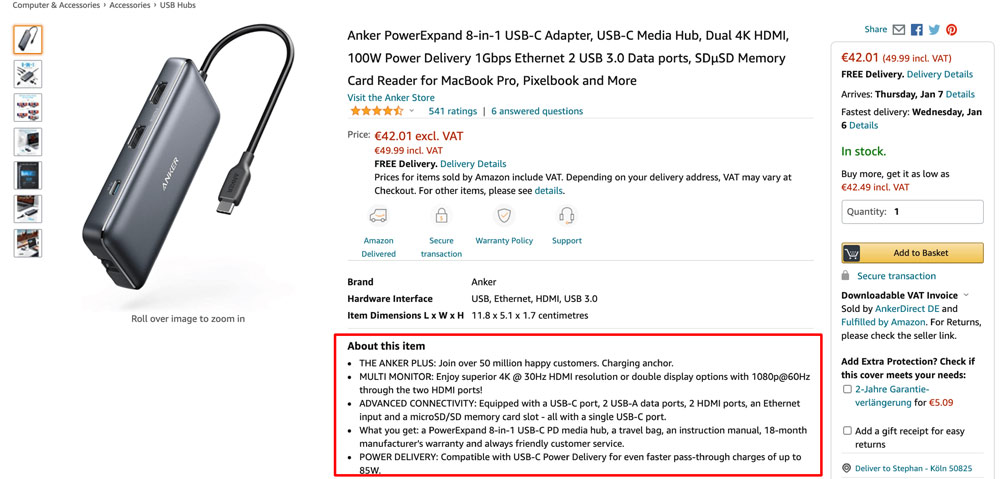
Analyzing your competitors’ product listings is a powerful way to gain insights and inspiration for your own optimization efforts.
Start by examining their product titles, bullet points, and product descriptions. Look for common elements and techniques used by successful sellers in your niche. Pay attention to the keywords they incorporate, the features they highlight, and the language they use to engage customers.
For example, if you’re selling Bluetooth headphones and notice that competitors emphasize noise-canceling technology and long battery life, you could differentiate yourself by highlighting features like superior sound quality or customizable EQ settings.
By conducting a thorough analysis, you can create a listing that stands out from the competition and effectively addresses your target audience’s needs and desires.
Crafting Compelling & Keyword-Rich Copy For Your Own Listings
Crafting compelling and keyword-rich copy is essential for optimizing your product listings. Start with thorough keyword research to identify relevant and high-volume search terms in your niche.
Once you have your keyword list, strategically incorporate them into your product title, bullet points, and product description.
However, avoid keyword stuffing and focus on maintaining a natural flow of information. Your copy should highlight the unique selling points of your product, address customer pain points, and emphasize the benefits customers can expect.
For example, instead of simply stating, “Durable and comfortable headphones,” you could say, “Immerse yourself in exceptional audio quality with our durable and ergonomically designed headphones that provide long-lasting comfort.”
Use persuasive language, compelling storytelling, and clear calls to action to drive conversions. Remember to prioritize clarity, readability, and user experience. A well-crafted listing that resonates with your target audience can significantly increase your conversion rates.
Incorporating High-Quality Images, Videos & Enhanced Content

High-quality visuals and enhanced content are crucial in capturing customers’ attention and boosting conversions.
Invest in professional product photography that showcases your product from various angles and highlights its key features.
Include lifestyle images that demonstrate your product in use, conveying its benefits and creating an emotional connection with potential buyers.
For example, if you’re selling camping gear, include images of happy campers enjoying the outdoors with your products.
Additionally, consider incorporating videos into your listings. Videos provide an engaging and dynamic way to showcase your product’s features, demonstrate its functionality, and answer common customer questions. They can help build trust, establish credibility, and increase the likelihood of conversions.
For example, if you’re selling kitchen appliances, create a video showing your product’s ease of use and versatility through recipe demonstrations.
Moreover, use enhanced content options like A+ Content or EBC (Enhanced Brand Content) to provide additional details, use cases, and storytelling elements that enhance the shopping experience.
Well-designed, informative, and visually appealing content can differentiate your listings and increase customer engagement.
Hack #5: Leveraging Social Proof & Customer Reviews
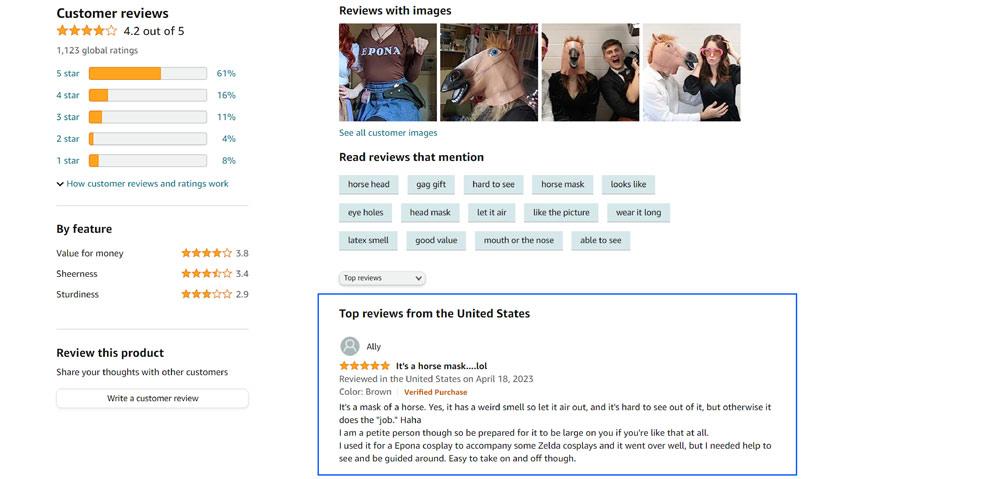
Social proof and customer reviews are powerful tools that can significantly impact the conversion rate of your Amazon ads.
Potential customers often rely on the experiences and opinions of others to make informed purchase decisions. By effectively leveraging social proof and customer reviews, you can build trust, establish credibility, and ultimately increase the conversion rate of your Amazon ads.
Here’s how you can do it:
Analyzing Competitor Customer Reviews & Ratings
Analyzing your competitors’ customer reviews and ratings is a valuable strategy to gain insights and understand the strengths and weaknesses of their products.
Take the time to study the reviews of competing products in your niche. Look for common themes, recurring praises, and criticisms. This analysis allows you to identify areas where your product can excel and differentiate itself.
For example, if you notice that competitors receive negative feedback about the durability of their products, you can highlight the superior build quality of your own offering. Additionally, pay attention to the overall rating and the number of reviews your competitors have.
Higher ratings and many positive reviews can instill confidence in potential customers, making them more likely to choose your product over competitors.
For instance, let’s say you’re selling wireless headphones and you notice that a competitor’s headphones have many positive reviews praising the battery life.
You can focus on optimizing your product’s battery performance and highlight it in your ad copy and product description. You position your product as a better alternative by addressing a common customer concern.
Monitoring Customer Feedback & Addressing Negative Reviews Promptly

Actively monitoring customer feedback is essential to maintain a positive reputation and address any issues promptly.
Negative reviews can impact the conversion rate of your Amazon ads, so it’s crucial to respond to them promptly and professionally. Regularly check your product listings for new reviews and note any negative feedback.
When you encounter a negative review, reach out to the customer to understand their concerns and offer a resolution.
By promptly addressing negative reviews and providing exceptional customer service, you demonstrate your commitment to customer satisfaction and showcase your brand’s integrity.
This proactive approach can turn dissatisfied customers into loyal advocates and enhance the overall perception of your product.
Let’s say you receive a negative review about the fit of your product. Reach out to the customer, apologize for their experience, and offer a replacement or a refund.
By addressing their concern promptly and resolving the issue, you improve the customer’s perception of your brand and signal to potential customers that you are attentive and responsive to their needs.
Encouraging Satisfied Customers To Leave Positive Reviews Through Follow-Up Emails

One effective way to generate positive reviews is by encouraging satisfied customers to share their experiences through follow-up emails. After a customer makes a purchase, send them a personalized email expressing your gratitude and kindly ask for their feedback.
Make it easy for them to leave a review by including a direct link to your product’s review page. To increase the likelihood of receiving positive reviews, consider offering incentives such as exclusive discounts or loyalty rewards for customers who leave feedback.
However, be cautious not to violate Amazon’s guidelines on incentivized reviews. By actively seeking positive reviews, you not only build a strong base of social proof but also increase the visibility and credibility of your product, leading to higher conversion rates for your Amazon ads.
When sending follow-up emails, ensure your message is concise, friendly, and appreciative. Personalize the email with the customer’s name and mention specific details about their purchase to make it feel more authentic.
Let them know their feedback is valuable to you and will help other customers make informed decisions. Provide clear instructions on how to leave a review and reassure them that their opinions are valued. Creating a positive and engaging email experience increases the chances of receiving positive reviews from satisfied customers.
Remember, the authenticity and integrity of customer reviews are crucial. Never engage in unethical practices like buying fake reviews or manipulating ratings. Such actions can lead to severe consequences, including account suspension. Focus on providing an exceptional product and customer experience, and let genuine reviews and social proof drive the success of your Amazon ads.
Conclusion
Mastering the art of outsmarting your rivals on Amazon requires a strategic approach and a commitment to continuous improvement.
By implementing advanced techniques like reverse engineering competitor strategies, uncovering untapped keywords, analyzing competitor ad campaigns, optimizing product listings, and leveraging social proof, you can gain a competitive edge and drive higher conversion rates.
Stay vigilant, adapt to changing trends, and always prioritize customer satisfaction. Remember, success on Amazon is an ongoing journey, and staying informed is key.
Don’t miss out on valuable insights and years-worth of Amazon selling tips. Subscribe to Eva’s Newsletter list today and receive exclusive content straight to your inbox.
Join our community of savvy Amazon sellers and elevate your business to new heights.


